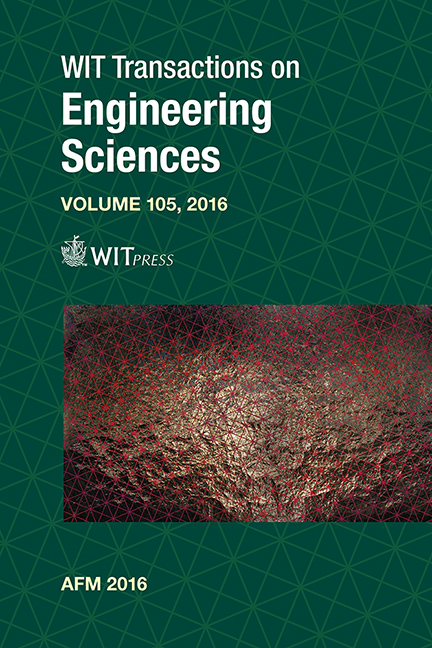Effect Of Radius Ratio On Pressure Drop Across A 90° Bend For High Concentration Coal Ash Slurries
Price
Free (open access)
Transaction
Volume
105
Pages
10
Page Range
65 - 74
Published
2016
Size
633 kb
Paper DOI
10.2495/AFM160061
Copyright
WIT Press
Author(s)
A. Rawat, S. N. Singh, V. Seshadri
Abstract
High concentration slurry pipelines are now being increasingly preferred for the transportation of coal ash slurries in thermal power plants. The focus of the present paper is to establish the effect of radius ratio on the pressure drop across pipe bends at high concentrations (Cw≥ 60% by weight) where the distribution of solids is expected to be homogeneous and hence to optimize the bend geometry for such flows. Fly ash slurries at concentrations above 60% (by weight) have a strong non-Newtonian character with Bingham fluid type of behaviour. Numerical simulation at high concentrations (60% to 68% by weight) through a pipe bend has been carried out using the commercially available CFD software FLUENT. For the laminar regime, the measured values of yield stress and Bingham viscosity are used as input, whereas for turbulent flow several turbulence models have been tried to establish the optimum turbulence model. To achieve this objective, the predicted results are compared with the experimental data obtained by earlier investigators at IIT Delhi on coal ash slurries with concentrations in the range 50 to 65% by weight. It was seen that predictions made using K-ω (SST) turbulence model were in good agreement with experimental data. Hence, using the K-ω (SST) model for turbulent flow and the Bingham plastic model for laminar flow, pressure drops for eight different 90° bends with different radius ratios (R/r) in the range 1 to 6 and sharp cornered bend (R/r=0) have been computed for different concentrations in the range of 60 to 68% by weight. On the basis of the study, the optimum value of radius ratio is found to lie between 3 and 4.
Keywords
HCSD systems, non-Newtonian fluid, Bingham plastic model, pipe bend, bend radius ratio, K-ω SST turbulence model





